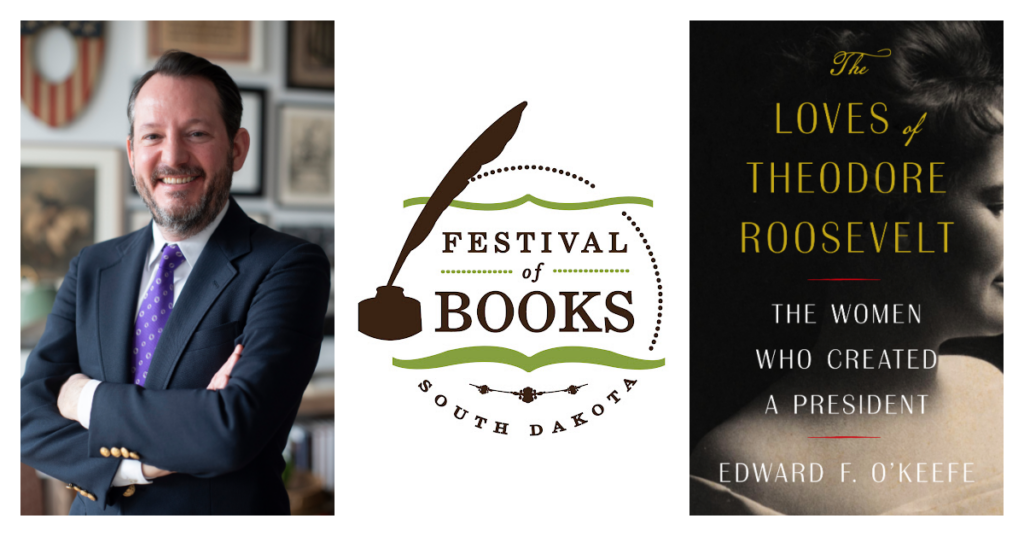Festival Feature: T.R.: Accessible and Relatable
September 21, 2024

Festival Feature: T.R.: Accessible and Relatable
NOTE: A version of this story appears in our 2024 South Dakota Festival of Books guide, produced by South Dakota Magazine. DON’T MISS Edward O’Keefe’s Festival presentation at 11:30 TODAY (Saturday) at The Oscar Larson Performing Arts Center!
One of the saddest bits of presidential trivia involves Theodore Roosevelt, who tragically lost both his mother and his wife on Valentine’s Day in 1884. His deep despair sent him from the hustle and bustle of New York City to the isolation of North Dakota’s badlands, where he lived two rugged years as a rancher.
Roosevelt later said that he never would have become president were it not for his experiences in the badlands. That notion made an impression on Edward O’Keefe, who grew up in Grand Forks and spent most childhood summers attending the annual Medora Musical and hiking in Theodore Roosevelt National Park.
As an adult, he wanted to write a book about Roosevelt’s time in his home state, but the research soon took a different course. “I found these extraordinary letters in every single place I looked,” O’Keefe says. “I saw the influence of these incredible women in his life. I thought it was a story that deserved to be told. The most masculine president in American memory is actually the product of unsung and extraordinary women.”
The Loves of Theodore Roosevelt: The Women Who Created a President uncovers the influence of Martha Bulloch Roosevelt, Anna Roosevelt Cowles, Corinne Roosevelt Robinson, Edith Kermit Carow Roosevelt and Alice Hathaway Lee Roosevelt — his mother, two sisters and two wives. Each of them provided counsel and consolation when Roosevelt needed them most.
O’Keefe writes that Anna, known as Bamie, was to her brother what Robert F. Kennedy was to John F. Kennedy. “Roosevelt’s daughter said that had Bamie been a man, she — not Theodore Roosevelt — would be president of the United States,” O’Keefe says. “Roosevelt called Bamie his feminine Atlas on whose shoulders the world rested.”
When Roosevelt left New York for the Badlands, he left his daughter with Bamie. Upon becoming president after the assassination of William McKinley, his first cabinet meetings were held in Bamie’s home, known in Washington, D.C., as the Little White House. “She is this extraordinary figure that intentionally wrote herself out of history. She didn’t want anybody to know that it was anyone but TR making these decisions alone.”
Similarly, his sister Corinne was a confidante during Roosevelt’s term as governor of New York. She would quietly knit or crochet while her brother held meetings with politicians or party bosses. Then, they would strategize. “Haven’t we had fun being governor of New York?” he once asked her.
O’Keefe, who serves as CEO of the Theodore Roosevelt Presidential Library Foundation, believes this new look at the 26th president only enhances the image of the self-made man that Americans have come to know. “I realized that Theodore Roosevelt is a bit like all of us. He needed people in his life, just like we all do, to help him make the right decisions, put him on the right path and pick him up when he’s down. I was excited by the notion that I was writing about a more universally accessible and relatable Theodore Roosevelt.”
Learn more about humanities programming in South Dakota by signing up for SDHC e-Updates!